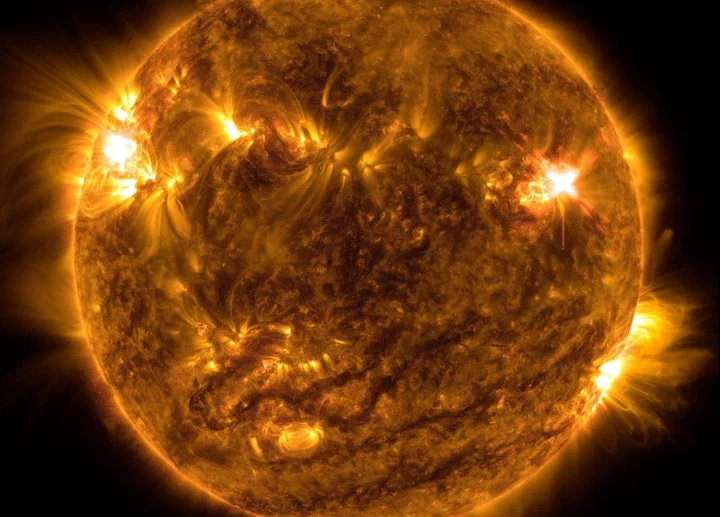A strange world blanketed in metallic clouds has been spotted in the cosmos.
Called LTT9779 b, it's an exoplanet, or planet beyond our solar system, that's extremely reflective. "The exoplanet is around the size of Neptune, making it the largest 'mirror' in the Universe that we know of today," writes the European Space Agency, whose exoplanet satellite Cheops made the observation. Cheops, short for "CHaracterising ExOPlanet Satellite," is a mission to closely study other solar systems, and better characterize the mysterious planets within.
This radiant world, which reflects prodigious amounts of light from its nearby star, is as harsh as it is unique.
"Imagine a burning world, close to its star, with heavy clouds of metals floating aloft, raining down titanium droplets," James Jenkins, an astronomer at Diego Portales University who worked on the research, said in a statement. The study was recently published in the science journal Astronomy & Astrophysics.
SEE ALSO: Webb telescope shows fantastic powers by zooming into alien planetCheops uses a single hi-tech telescope to peer at deep space exoplanets as it watches for these distant spheres to transit in front of their respective stars. This temporarily dims the star, allowing astronomers to analyze minute changes in light that ultimately determine these exoplanets' size, density, and other characteristics. By looking at LTT9779 b, located some 262 light-years away, Cheops could see the strong combination of light from both the planet and its star, as opposed to just light from the star (when LTT9779 b transited behind).
Earth reflects about 30 percent of the sun's light. But LTT9779 b reflects 80 percent of its starlight.
The Cheops spacecraft determining properties of the exoplanet LTT9779 b. Credit: ESA (Acknowledgement: work performed by ATG under contract for ESA)LTT9779 b isn't just extremely bright. It's also extremely hot. The planet orbits its star in just 19 hours (as opposed to Earth, which, as you know, orbits the sun every 365 days). A Neptune-sized planet, which is about four times wider than Earth, had never before been seen so close to a star.
"It’s a planet that shouldn’t exist," Vivien Parmentier, an astronomer at the Observatory of Côte d’Azur in France who also worked on the research, explained in a statement. "We expect planets like this to have their atmosphere blown away by their star, leaving behind bare rock."
"It’s a planet that shouldn’t exist."In such a torrid realm of a solar system, small rocky worlds or perhaps giant "hot Jupiters" are spotted dwelling near their stars. Yet LTT9779 b has defied expectations. And the researchers suspect the metallic clouds make it possible.
Want more science and tech news delivered straight to your inbox? Sign up for Mashable's Light Speed newsletter today.
"The clouds reflect light and stop the planet from getting too hot and evaporating," Sergio Hoyer, a researcher at the Marseille Astrophysics Laboratory in France, noted. "Meanwhile, being highly metallic makes the planet and its atmosphere heavy and harder to blow away."
LTT9779 b is an unexpected, mirror-like oddity. What other curiosities are out there, lurking in the deep cosmos?









